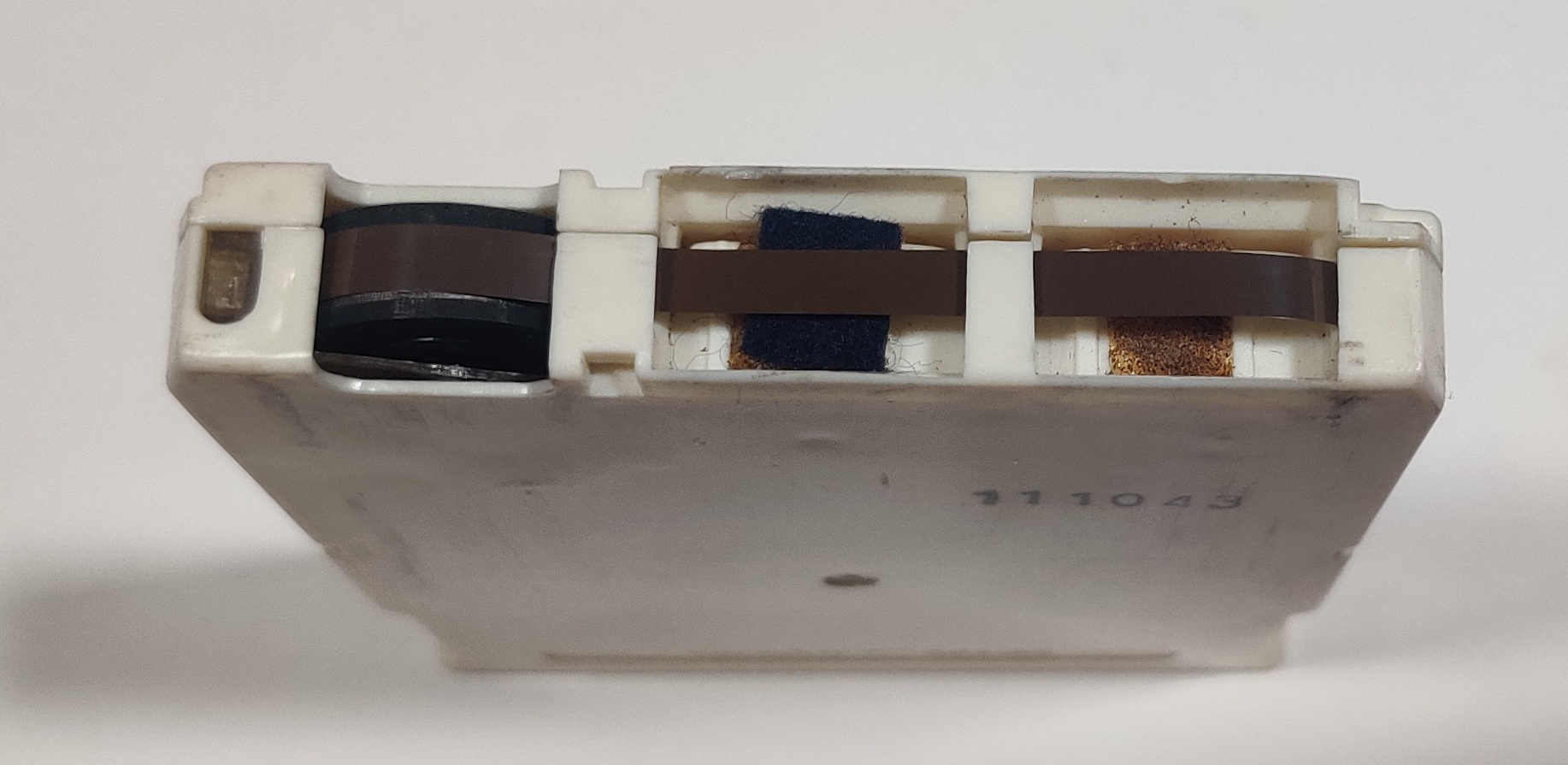fall inside a hole
Pioneer HIPAC
GP-100 & GP-105
First written August 2024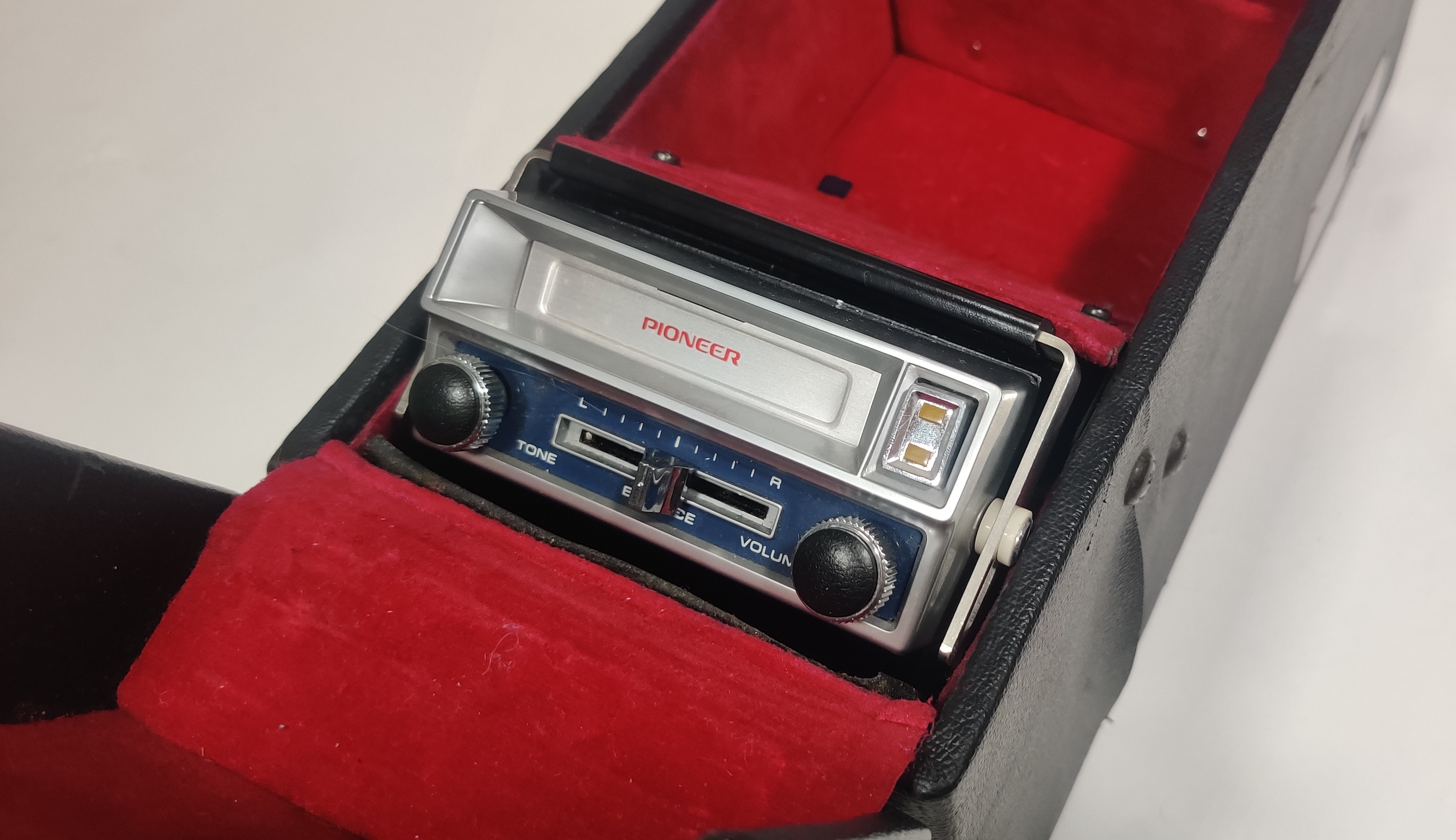
HIPAC (ハイパック), also called HiPac and sometimes Hipac, was a four-track, two-program endless loop tape cartridge format primarily sold by Pioneer in Japan. The format debuted in September 1971 and was positioned as a car, home, or portable device with a docking head unit and amplifier with a range of tapes. Later on, the format was used for a few children's toys, and it also saw use in echo machines, answering machines, and some other tape-based uses.
ハイパック (literally "high pack") is also used to refer to a brand and range of storage containers and occasionally enclosed trucks like the Isuzu Hi-Pack as they can be "packed high" as opposed to open bed trucks.
Pioneer GP-100
The Pioneer GP-100 is the initial 1971 introductory model of Pioneer HiPac. The device is small as far as these types of device (quasi-car-portable-home-endless-loop-tape-players) go, with the main body measuring ~105mm across, ~55mm tall, and around 200mm deep from rear to front of the controls. Some of this is to do with the size of the cartridge to begin with than the miniaturization of the mechanism around it, with the tapes measuring 75mm across, 85mm tall, and 13mm or so deep. The head unit weighs about 1390 grams or a little over 3 pounds.
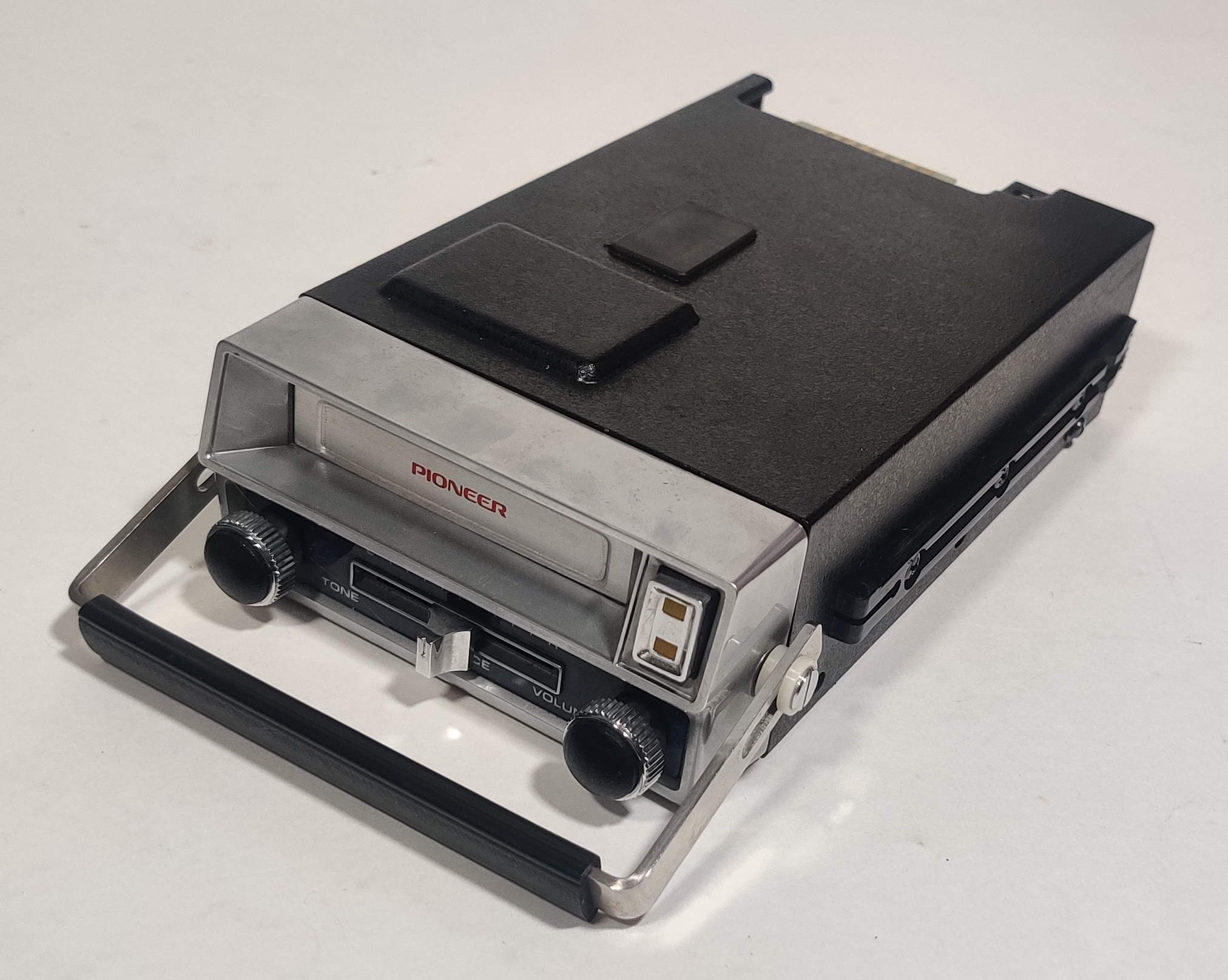
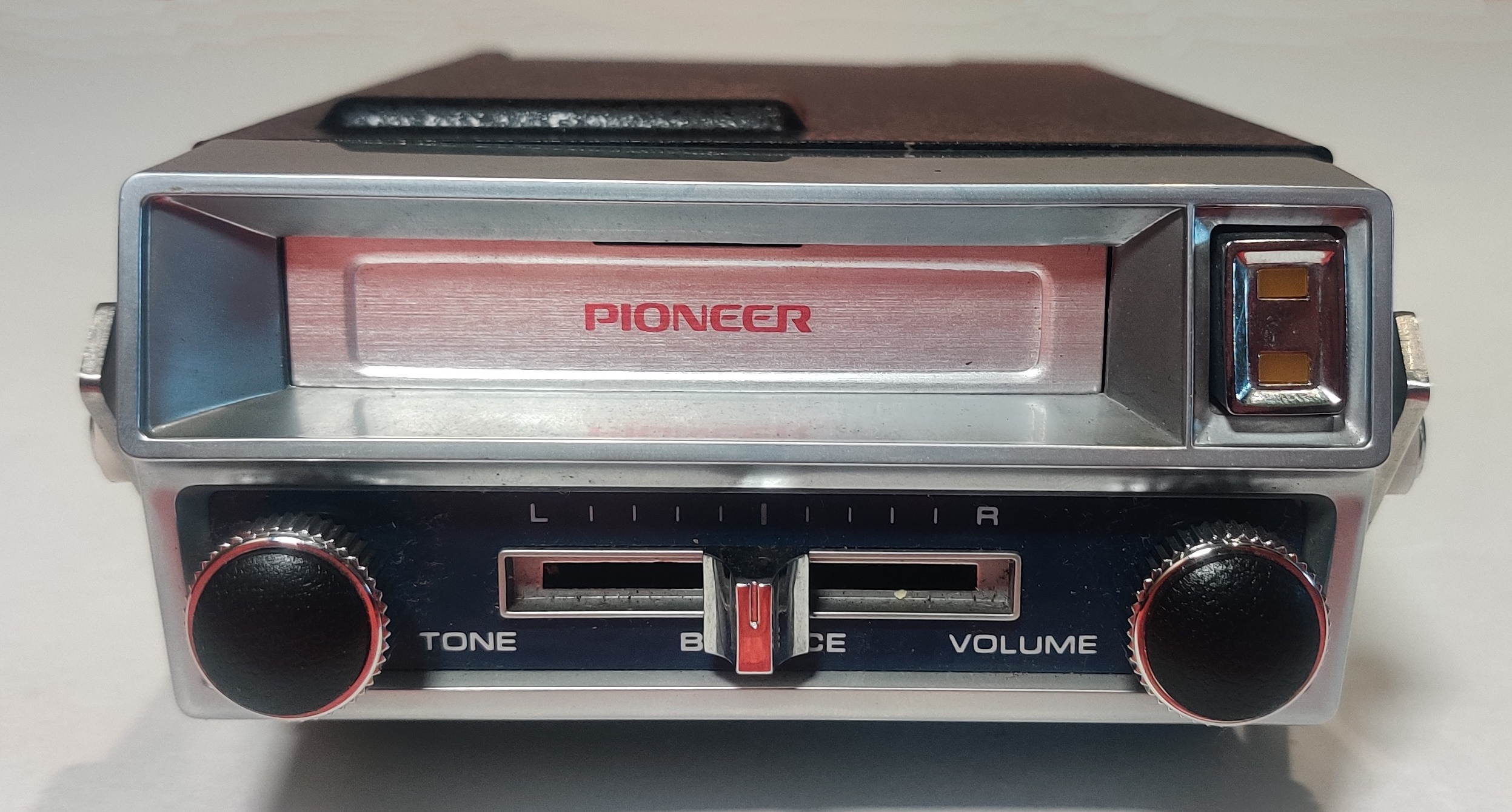
The unit has a handle on the front and controls for the program selection, tone, balance, and volume.
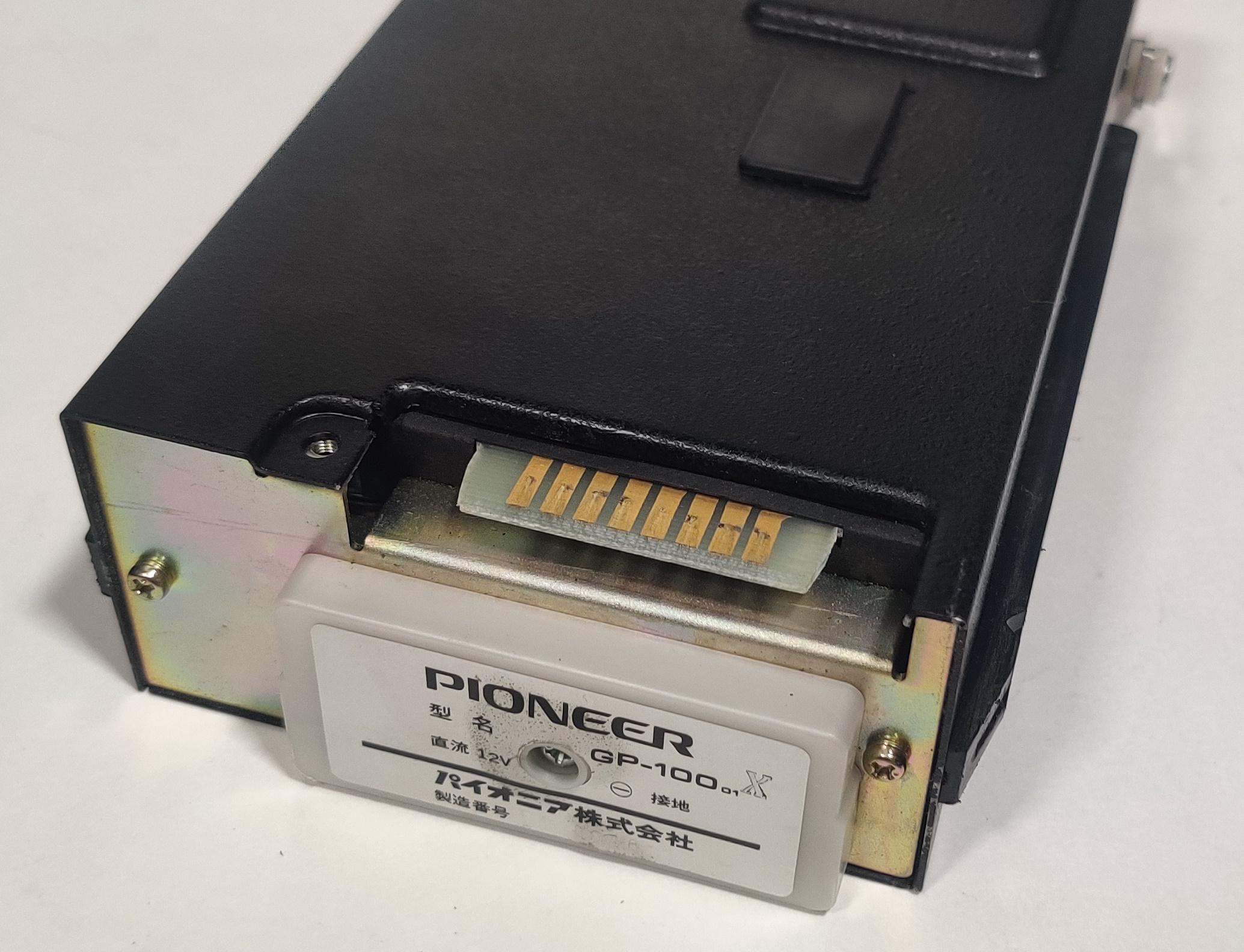
Around the rear is the information plate and a card-edge connector. The idea of this player, like some eight-track players that Pioneer had been selling, was that the head player unit could be slid in and out of different carriers that could be installed into cars or into a portable player unit or as part of a home stereo. Then the buyer could purchase one head unit and whatever dock(s) they may have wanted for it, and it could be permanently installed in a car or brought inside to use as a home device if desired. This also meant that, theoretically, the buyer could purchase a nicer head unit later, perhaps one with a built-in radio, and use the same car mount and portable carrying case.
To dock my Pioneer GP-100, I also have the...
Pioneer GP-105
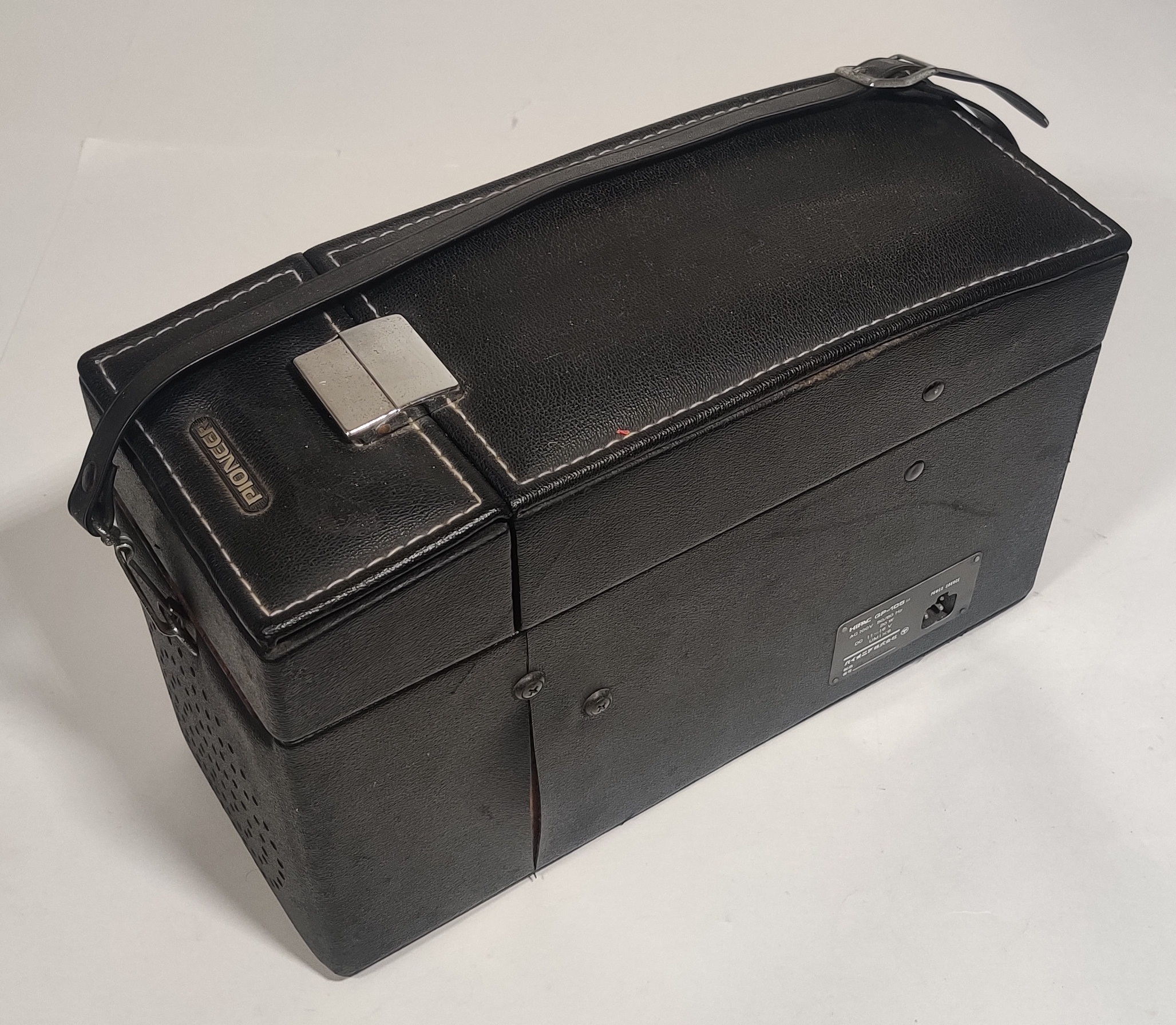
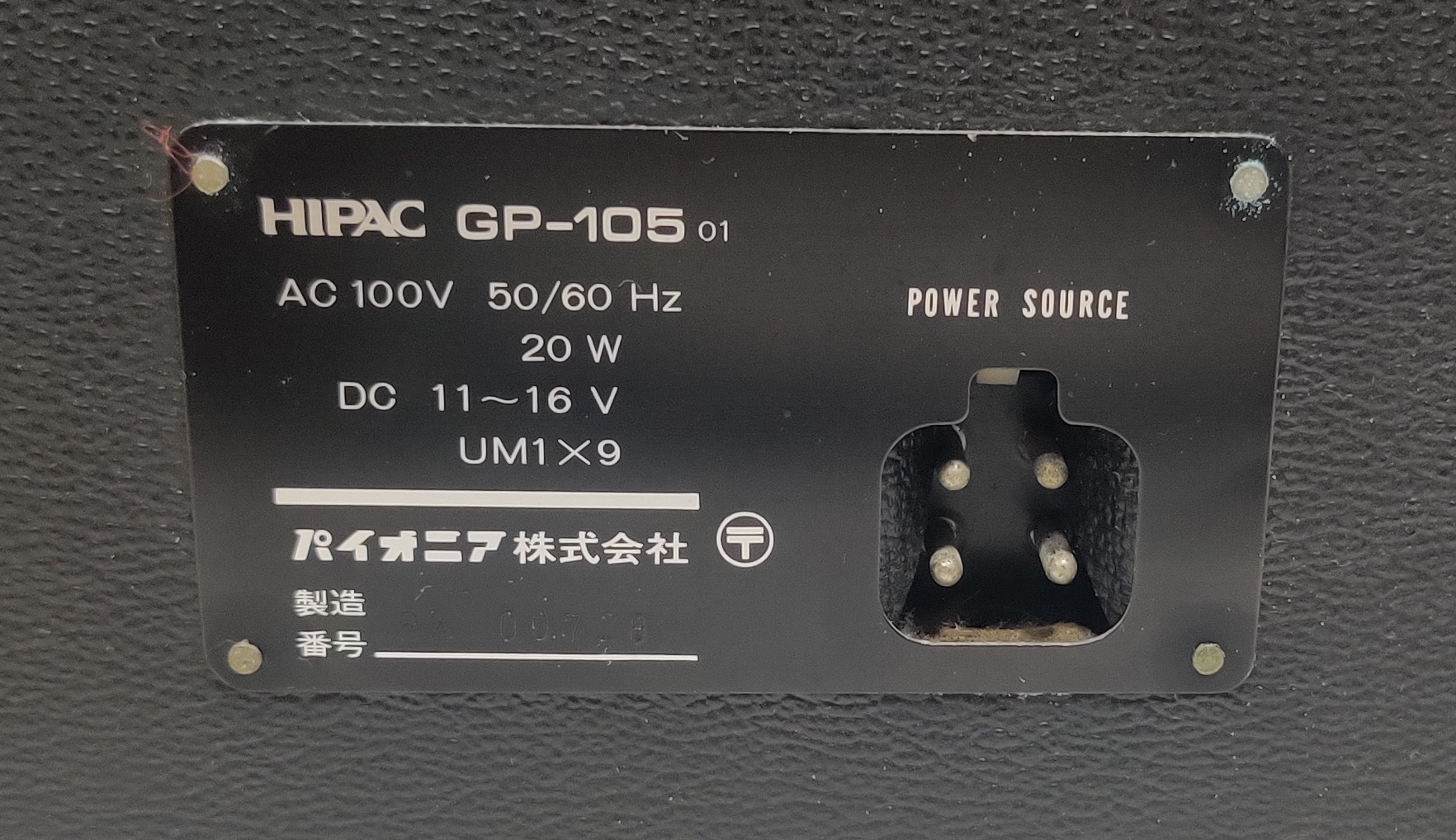
The Pioneer GP-105 is a combination carrying case, transportable player, and portable "boom box" style carrier for the Pioneer HiPac models that use the sled system.
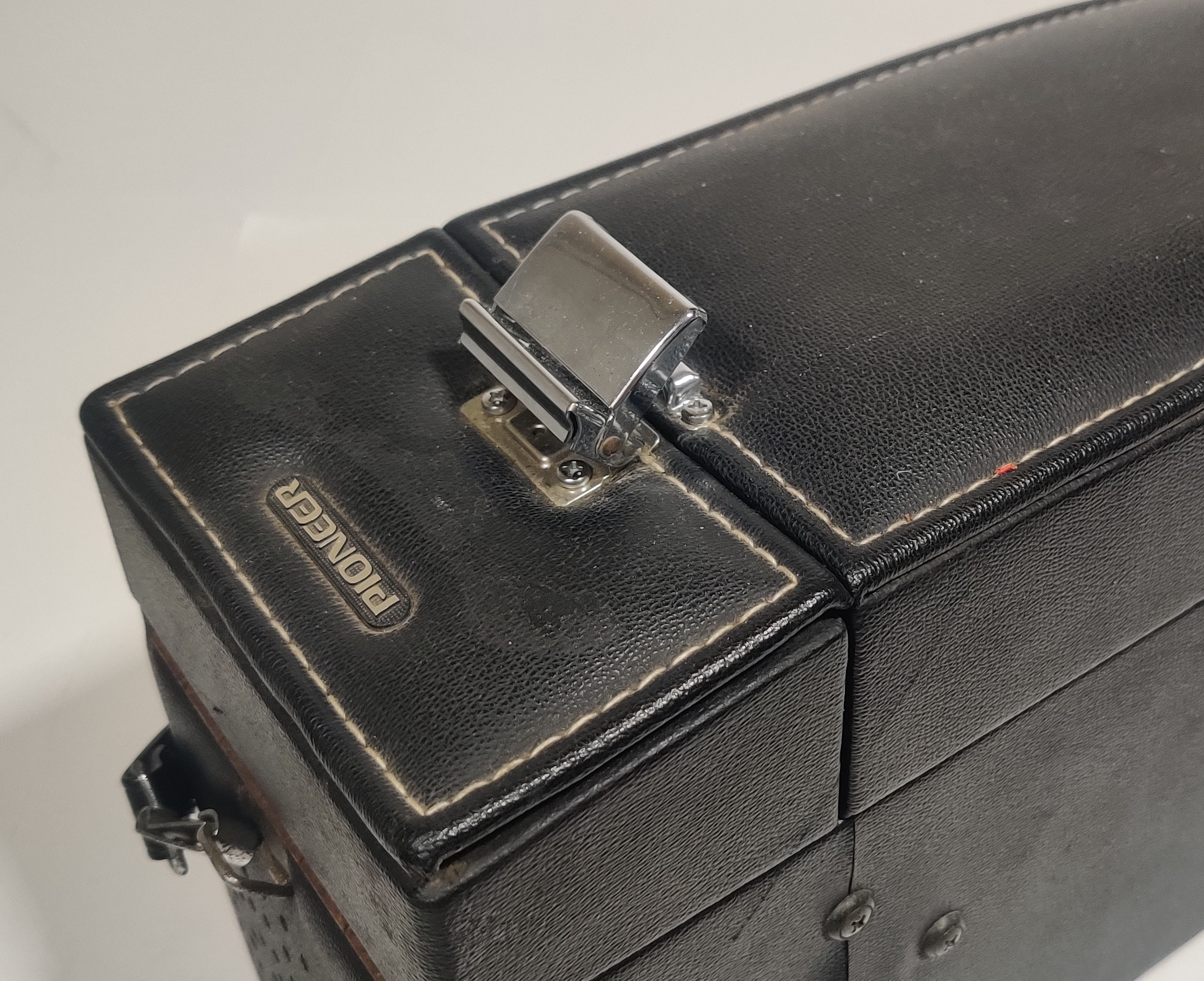
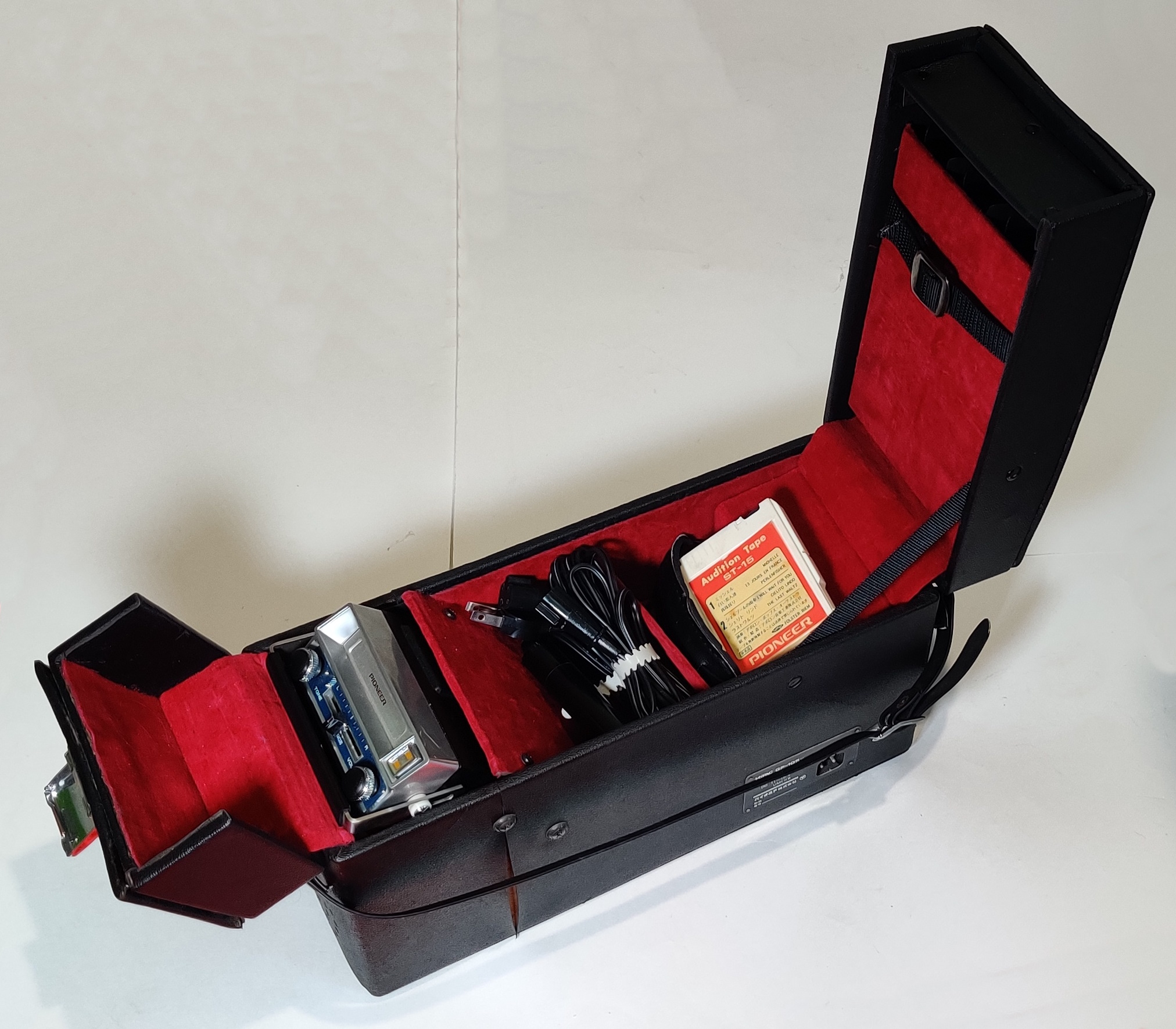
The case itself measures about and weighs about with the head unit installed. A large metal clasp on the top keeps the case closed for transportation and opens to reveal the slanted player and some storage space.
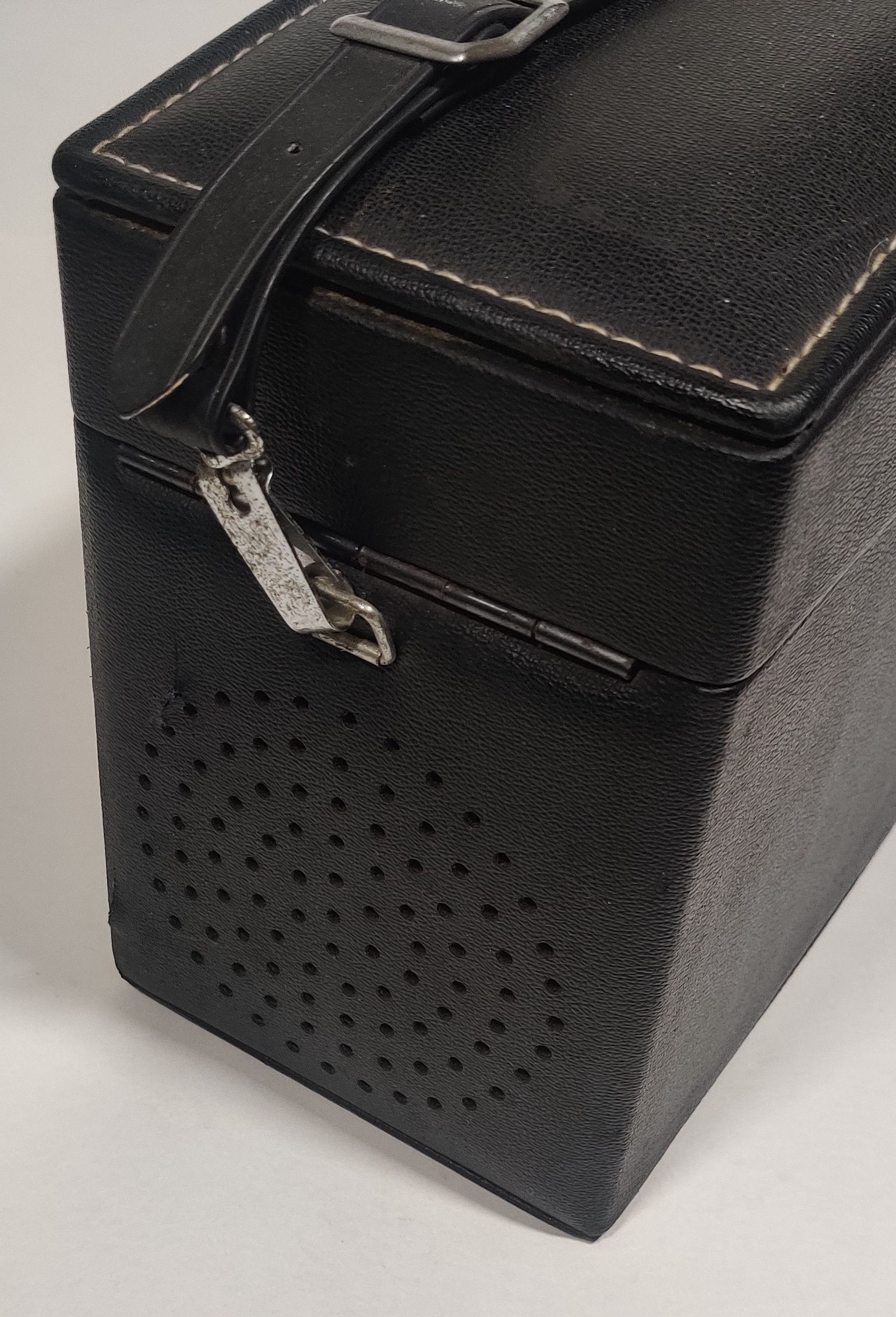
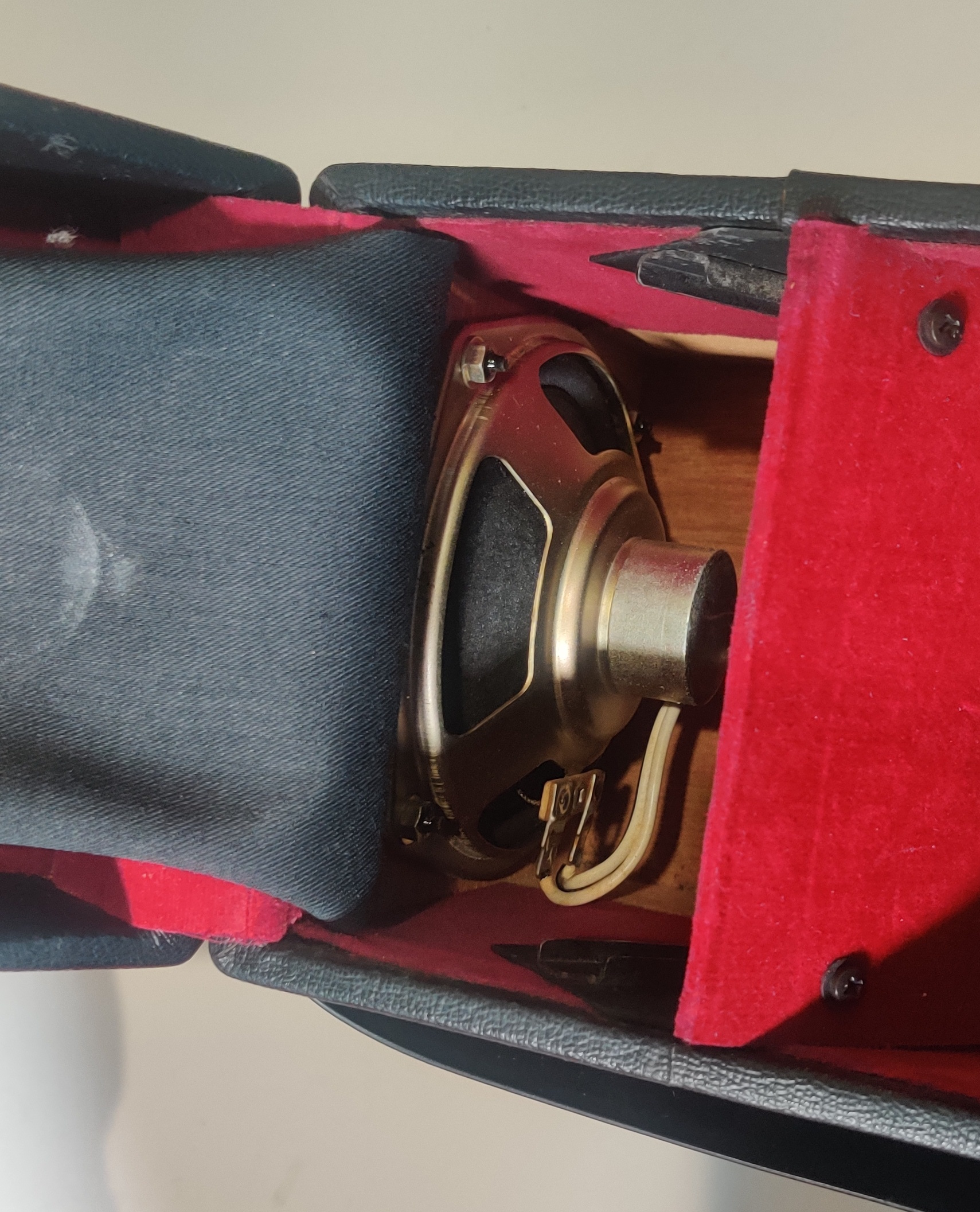
The case has two speakers, one at the front and one at the back, and they are in stereo.
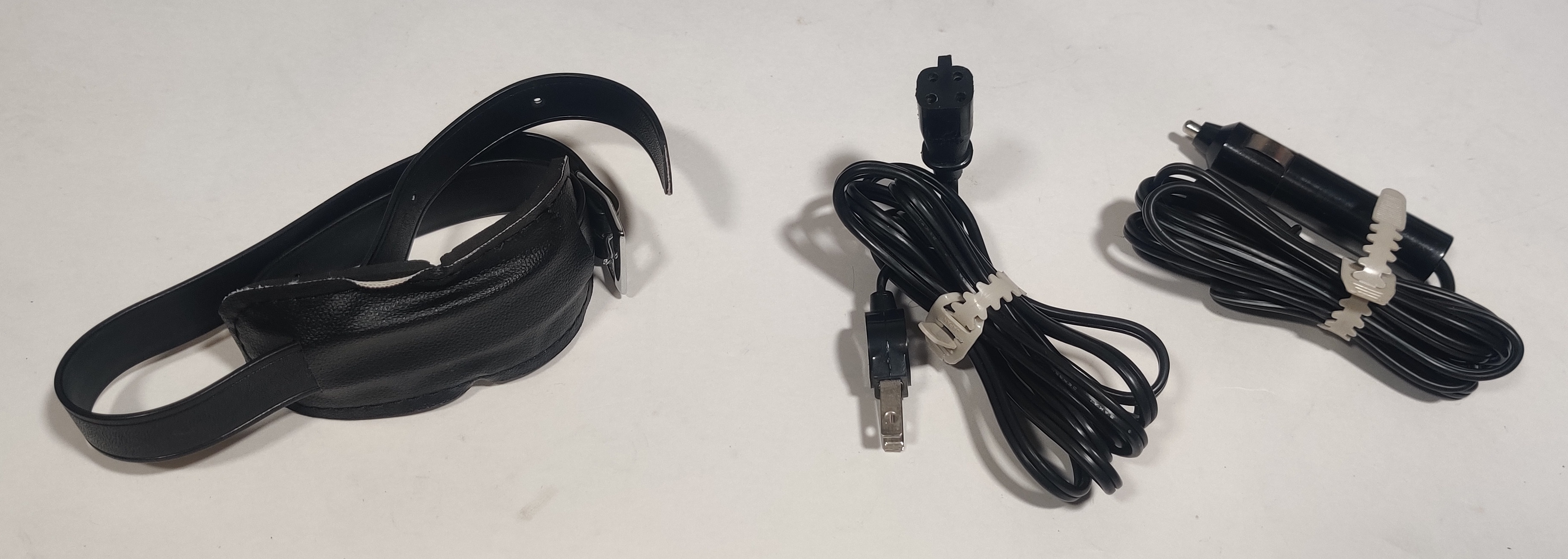
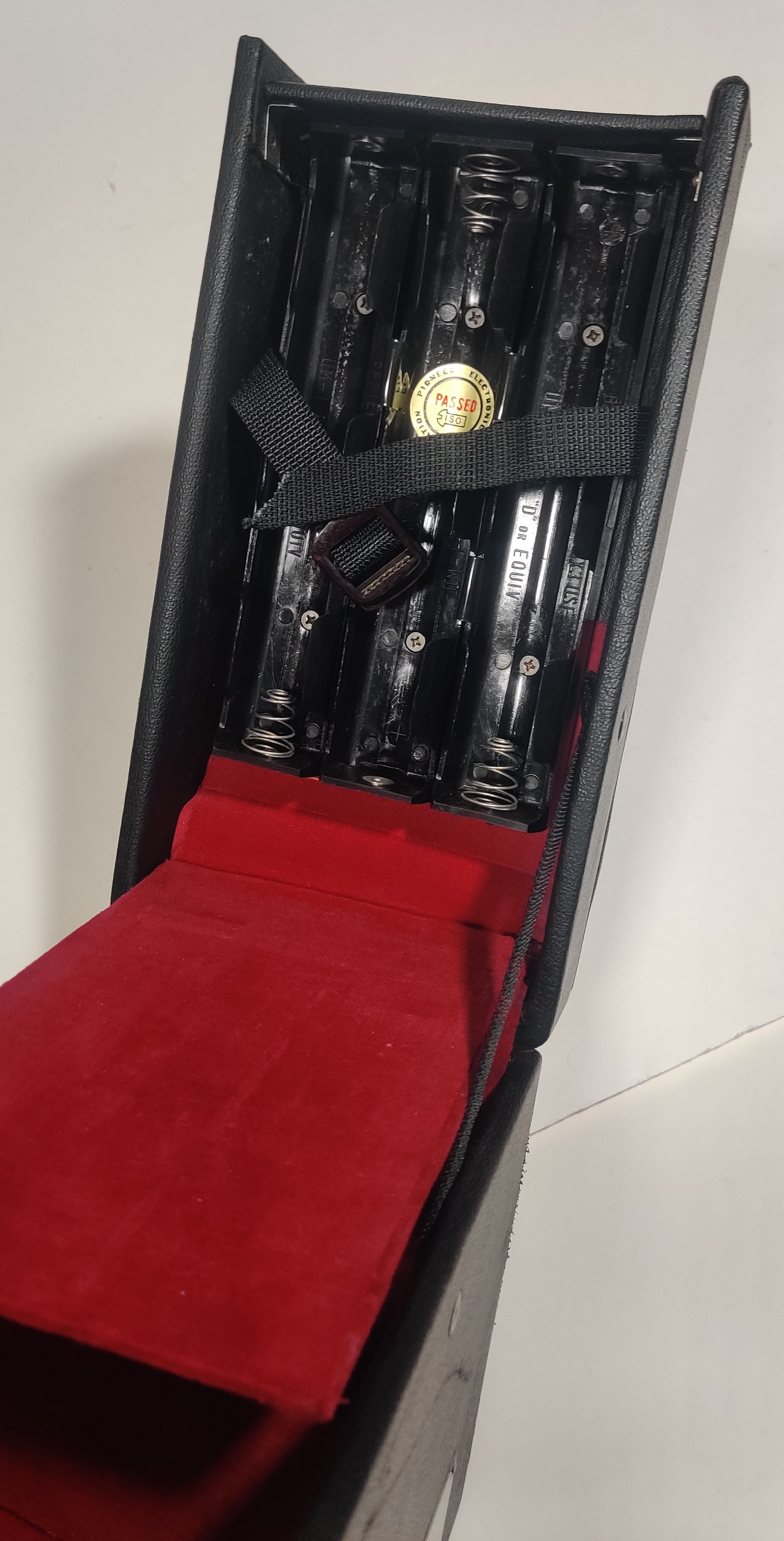
Included with the case is an extension to the hand strap that allows it to be slung over the shoulder instead with a padded shoulder pad. A cord for connecting the case directly to mains power as well as plugging it into a car's cigarette lighter/accessory slot are included, and in the larger rear lid there is a compartment that fits nine D batteries, meaning this one enclosure can be used at home plugged into the wall, in a car plugged into the lighter socket, or anywhere on battery power.
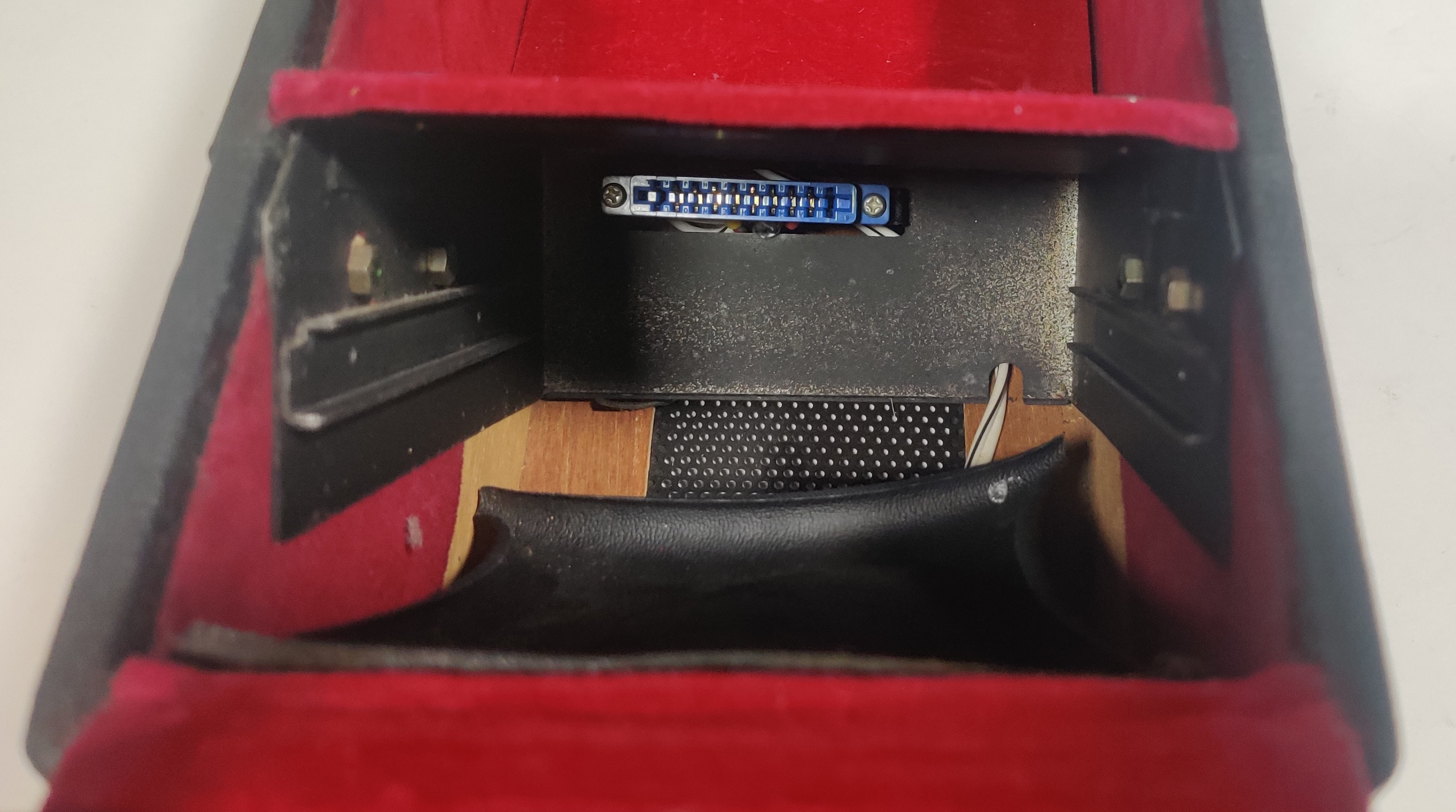
The player in my example was originally screwed down through a tab near the edge connector in the case, but removing the screw lets the player slide in and out. I think that this all-in-one package (with the GP-100, cords, and "audition" demo tape shown below) was sold together (with the screw installed), and I have seen it come up for sale in Japanese auctions a few different times.
Pioneer Audition Tape
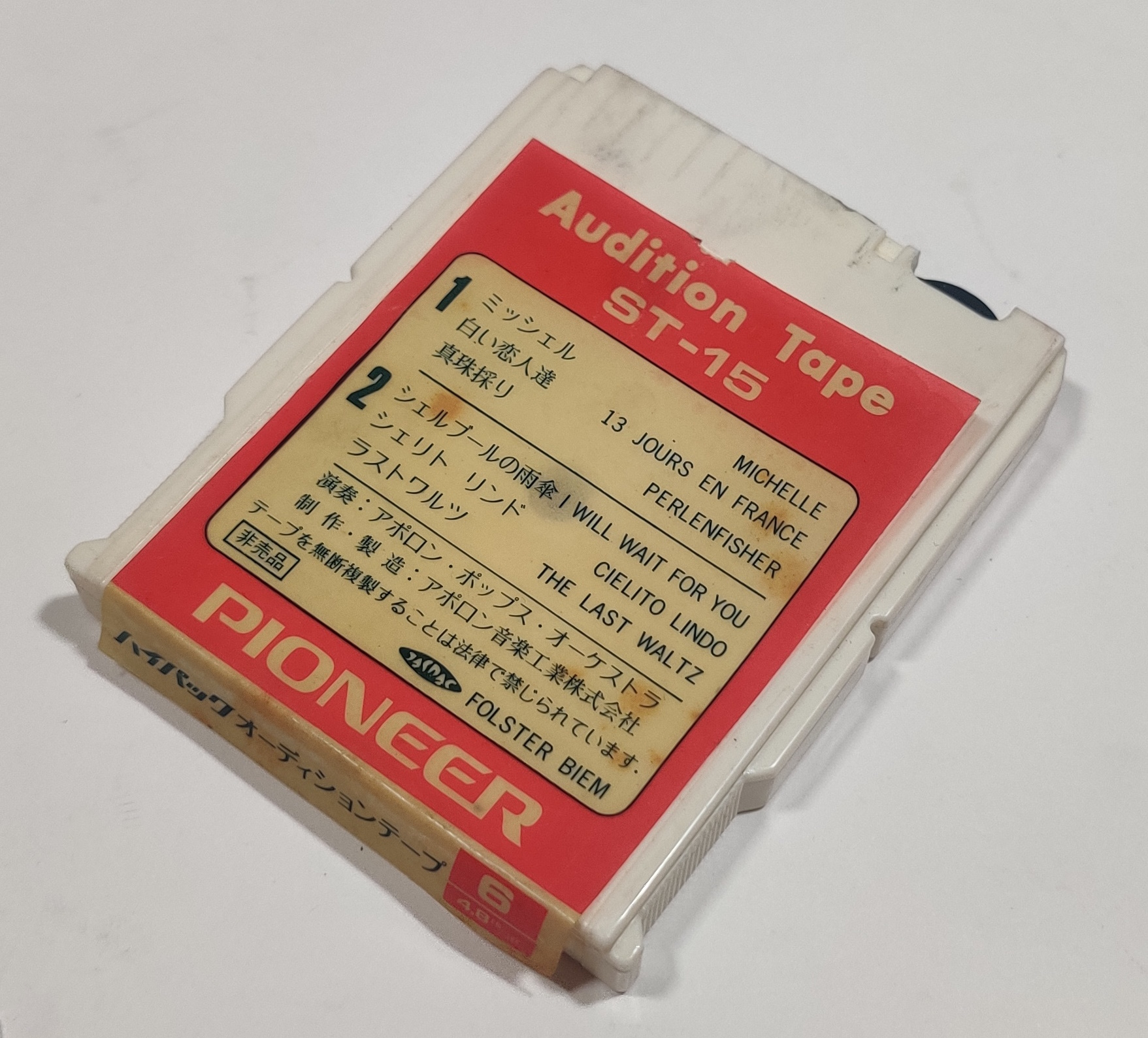
This "Audition Tape" was included as a demonstration tape (the tape is "auditioning" the system to you). The tape contains renditions of Michelle, music from 13 Days in France, the Pearl Fishers' duet, I Will Wait for You, Cielito Lindo, and the Last Waltz performed by the Apollo Pops Orchestra アポロン・ポップス・オーケストラ.
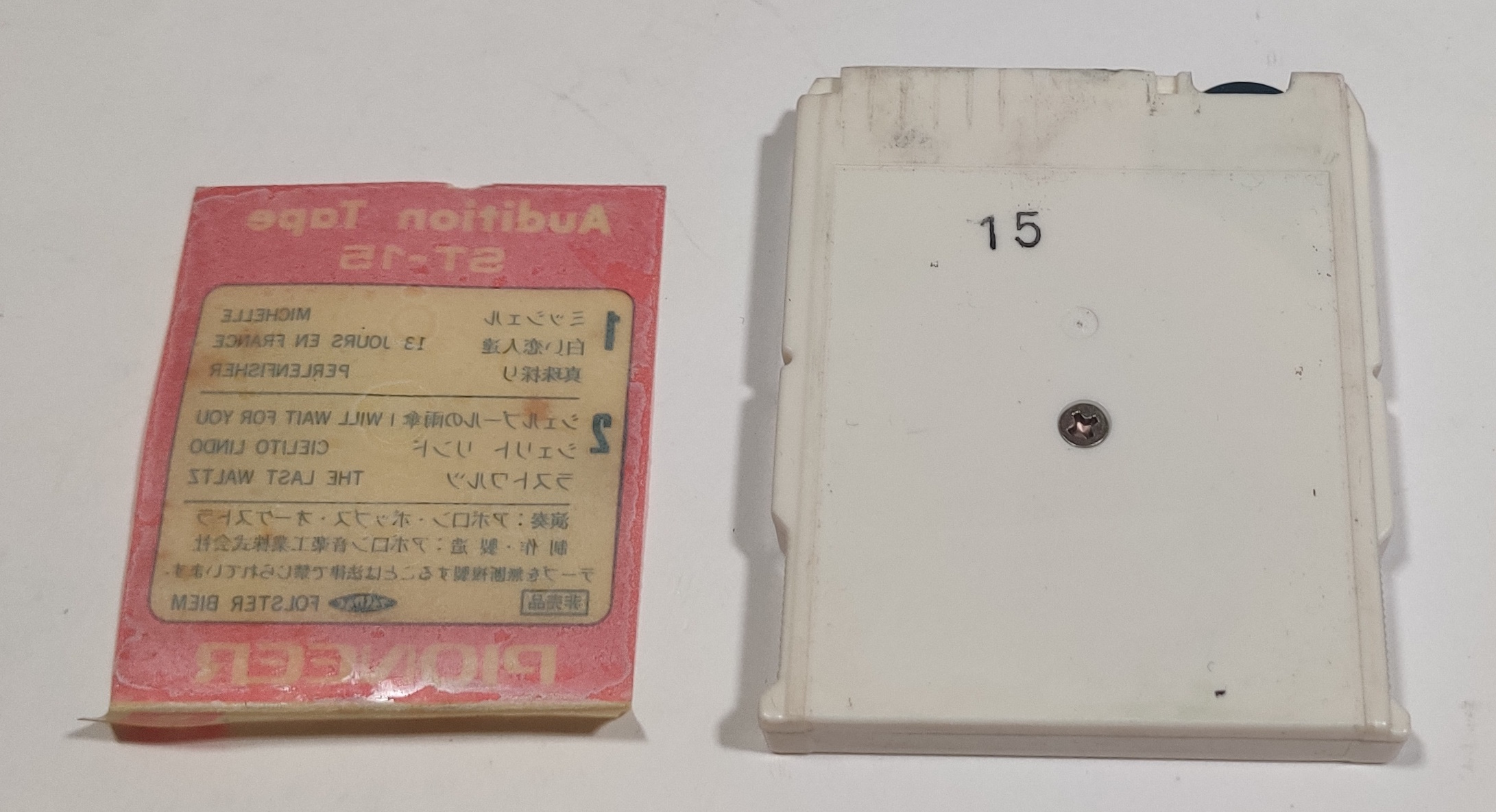
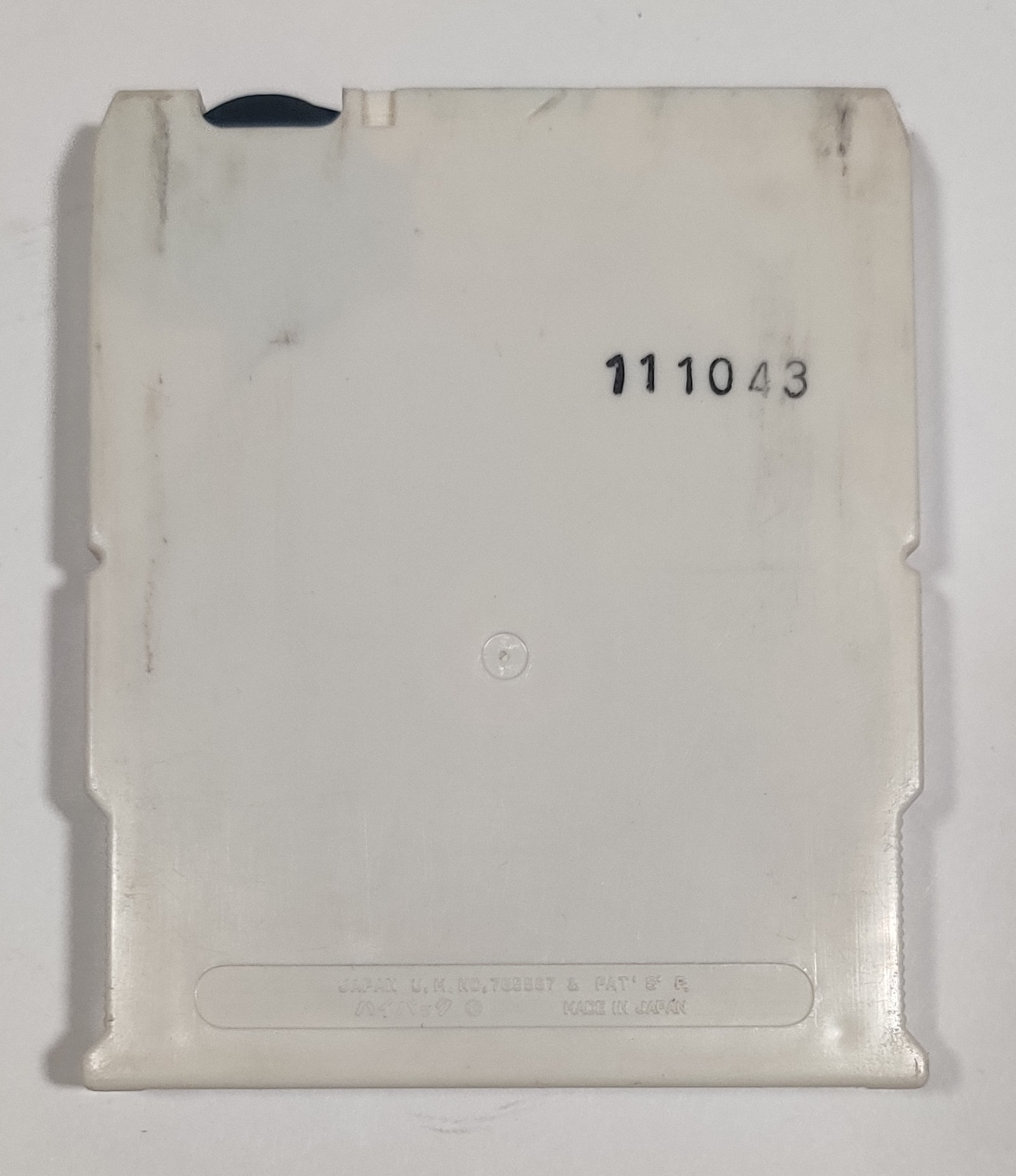
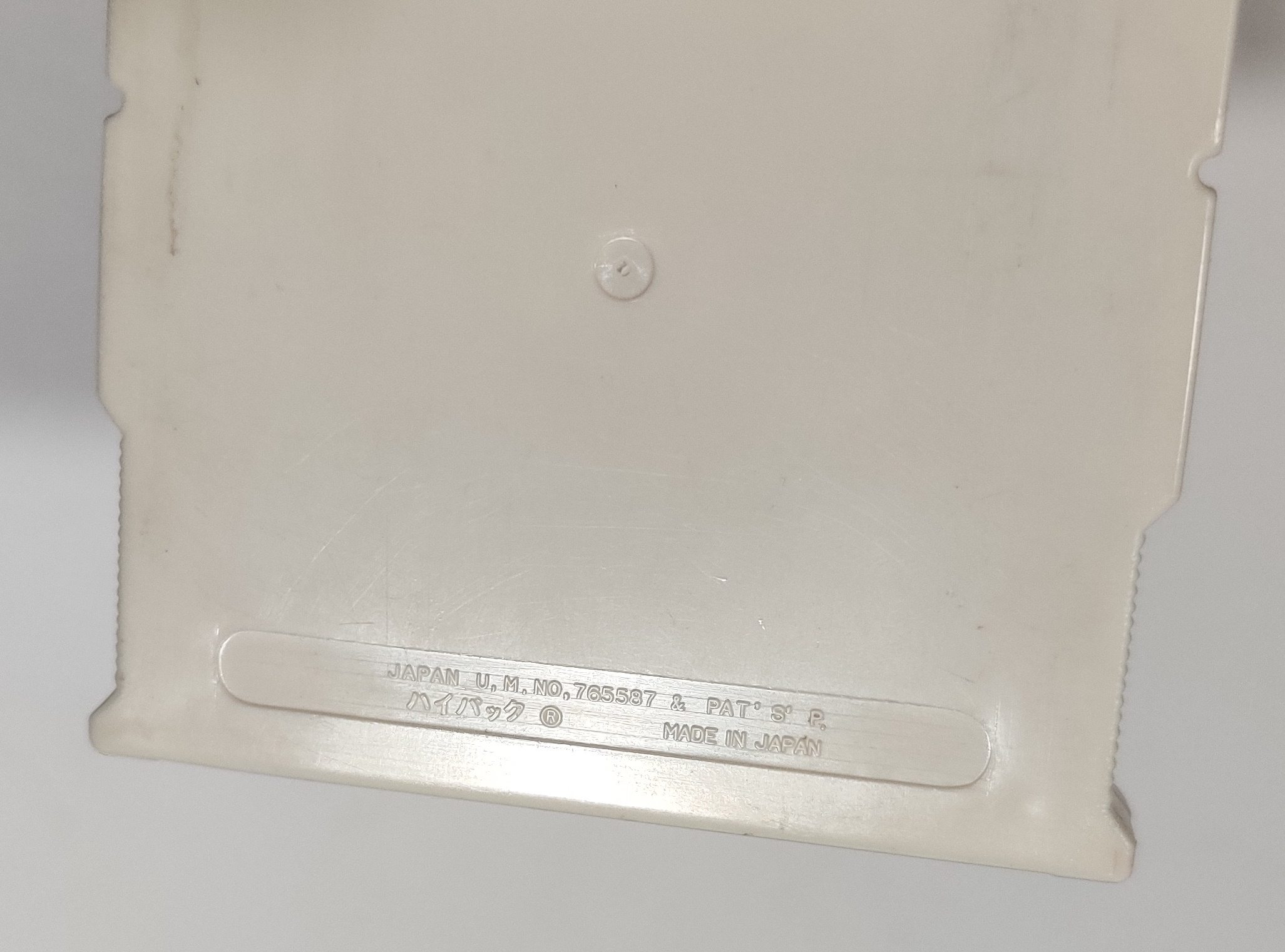
The label on my tape has come unglued.
